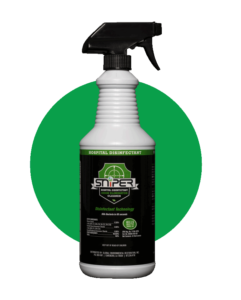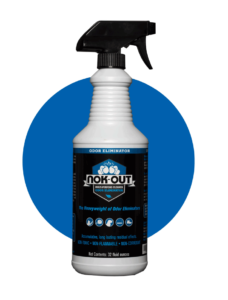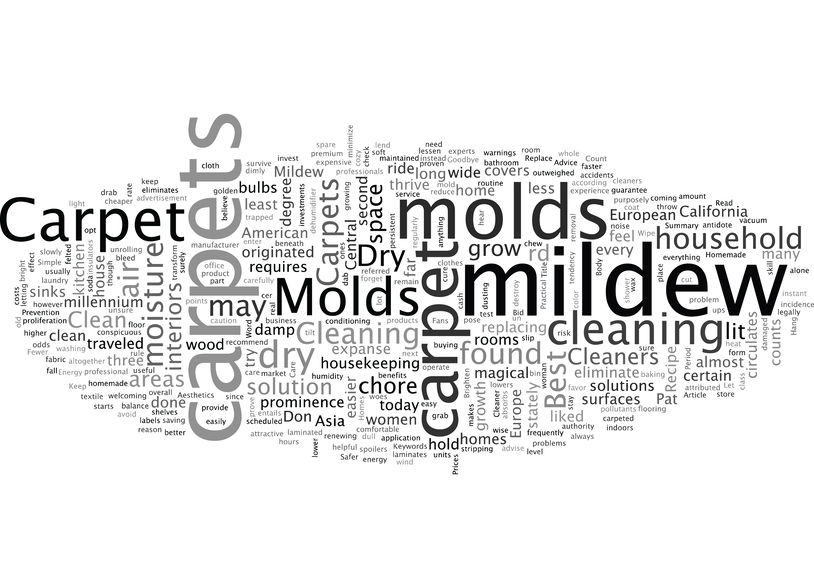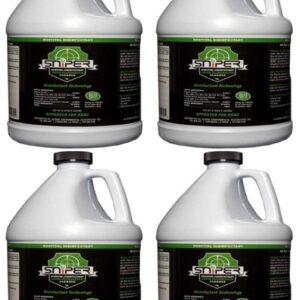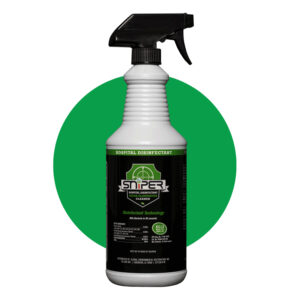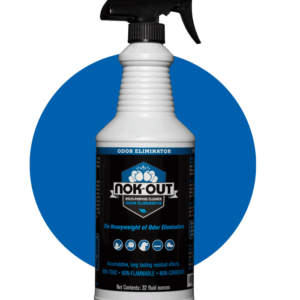Carpet Mold Is Not Just A Smelly Problem
As one of Natures most prominent recyclers, mold and mold spores are everywhere all around us. Most people are blissfully unaware of it, most of the time. But if we do become aware of mold and it is growing in your home, pretty much everyone is offended by both the sight and the odor. One of the most important reasons to be offended is that molds produce spores that can cause allergic reactions for some people. These reactions may simply be a runny nose, sneezing, red eyes and occasionally, a skin rash. In the worst cases, some molds produce substances known as mycotoxins which are highly toxic and can be fatal. Not every mold spore is toxic and not everyone will respond to molds in the same way, but the bottom line is, if you are experiencing allergic-type reactions in your home, mold may be the cause of it. And your carpet may be home to such molds. Carpet mold is not uncommon! Especially if you have carpet in your basement or other below ground areas.
Now is the time of year when humidity levels are high and because our homes are susceptible to mold growth during times of high humidity, it is smart to be prepared for what we know is coming. Having some mold-killing, odor eliminating SNiPER on hand is a good tool for your home toolbox!
How Can You Tell If Carpet Mold Has Become An Issue?
Typically, the first thing is the odor. Mold is the source of musty odors and if you are starting to notice this odor in a carpeted room during a time of higher than normal humidity, you may want to take care of this sooner, rather than later. Early on, many mold infestations can be dealt with and resolved successfully. Left unattended, however, mold can grow to become a real problem that can be expensive to fix.
Mold doesn’t like light so even if you cannot see any mold on the surface, it may still be growing underneath where you can’t see. Visible mold growth on your carpet is a worst-case scenario and is likely the result of a minor or major flooding event. If you have visible mold growth, it is likely that the carpet is not going to be salvageable. Even if you can’t see mold growing on the surface, it may be growing on the underside, away from the light, or in the pad underneath. Again, this kind of carpet mold growth is likely to be the result of a minor or major flooding event.
Your carpet is a magnet for all kinds of dust-like particles including mold spores. So when your carpet gets wet and stays wet, the spores are already there waiting to start growing. The growth begins within 24 – 48 hours of any wetting event.
So if you do have some minor flood pull the carpet back and dry the layers and area underneath using fans. Do not delay. Get right on this if you want to have a chance to save the carpet. If the pad underneath is soaked, you should probably throw away the pad and replace it after you have dried everything else.
Mold can grow invisibly in your carpet also. High indoor humidity levels during warm wet times of the year can be enough to get mold growing in the pad. You would probably begin to smell it rather than see it, or it may simply be an increase in irritants resulting in an increase in allergic symptoms you experience. This is where SNiPER can be applied to your carpet to stop the growth of carpet mold in its tracks.
Basements are well known as a place when humidity levels can increase during the warm wet times of the year. Condensation can easily form on walls and then run down the wall to dampen the carpet. At times, an increase in indoor humidity is sufficient moisture to allow the growth of molds to begin.
So, What To Do?
Prevention is the best option by far. Anything you can do to remove the conditions that promote carpet mold growth will pay off for you. Here are some ideas for you:
1) Use a dehumidifier during those warm wet times of the year. Your target is 30% to 60%. This is prevention at its best. Dehumidifiers do produce heat as a by-product, which means more work for your AC unit, but the benefits of drier indoor air outweigh the increased energy expense.
2) Think about the places you have carpet. Is it a good idea to have carpet in areas that are often wet or highly humid? Probably not a good idea for the bathroom, for example.
3) If you are buying new carpeting, consider getting a better quality pad that has anti-microbial properties. This type of pad will be more expensive, but may pay off if you live in a highly humid area, or if you intend the carpet to go into the basement. With the climate change we are currently experiencing, most of us can expect our bit of the world to become more humid going forward, so this is becoming the new normal and we need to be ready for it. Some of these better quality pads may be better able to handle pet accidents also.
4) Minor or major flooding events need to be dealt with ASAP. Standing water is bad news and if your carpet is soaked for any length of time, you can expect mold to start growing within 24 to 48 hours. Start by pulling the carpet away from the walls. If the pad is drenched, throw it away. Use a wet vac if you have one and vacuum up as much water as possible. Put fans on it to speed the drying process. The quicker you can dry both sides of the carpet, the better chance you will be able to save that carpeting. Don’t try to save the pad – really. Padding is cheap compared to the cost and pain of dealing with a serious mold infestation.
Can SNiPER Remove Mold From My Carpet?
If you act fast to remove the water after some wetting event, you have a chance. SNiPER can slow the growth of carpet mold until you can deal with the water issue, and once dry, go on to kill any mold growing and you may be able to salvage the carpet. It starts with drying. If there was flooding, then the first task is to get rid of the water as quickly as you can. One possibility is to call a professional carpet cleaner. Their powerful machines can remove a lot of the water quickly. And again, getting rid of the water is the most important first step.
Can I Put SNiPER into my Home Carpet Cleaning Machine?
Yes, you can – if it is a relatively small growth. Just add SNiPER to your machine diluted by half. This application of SNiPER is for when you can smell mold or musty odors, but can’t really see any growth or detect any dampness.
If there is visible growth, it becomes less likely that the carpet can be salvaged because to to remove the staining, you would need to bleach the growth, which would tend to ruin the carpet anyway. You will have to make the decision whether to try to keep the carpet or bite the bullet and have new carpet installed.
The Bottom Line
SNiPER kills carpet mold without leaving toxic residues behind. If you catch it soon enough, you can prevent carpet mold from ruining your carpet and maybe your health.
If you act fast, you can save your carpet even in the event of relatively large flooding events. Get rid of the water and dry out the carpet thoroughly. Spray SNiPER to hold down the growth of mold while the wet carpeting is drying. Replace the pad. This can be a lot of work and may span several days, but with SNiPER, there is a good chance you can salvage the carpet and save yourself a lot of money.
Sniper kills the carpet mold, but it is not a bleaching agent. Mold stains in carpets may be difficult to remove because anything that bleaches the mold stain – to make it change color – is also likely to bleach your carpet.
Additional Information For You
1) Mold Season – https://nokout.com/mold-season/
2) Water Damage From Small Flooding – https://nokout.com/water-damage-small-flooding/
3) Flood Recovery – https://nokout.com/flood-recovery-with-sniper-disinfectant-and-odor-eliminator/
4) SNiPER or Nok-Out in your carpet cleaning machine – https://nokout.com/use-nok-out-in-your-home-carpet-cleaning-machine/
Try Some Today!
Imagine having one cleaner and one deodorizer for all your cleaning needs that is safe, green, and powerful. Now you can!
Get ready to throw out all your toxic products.
